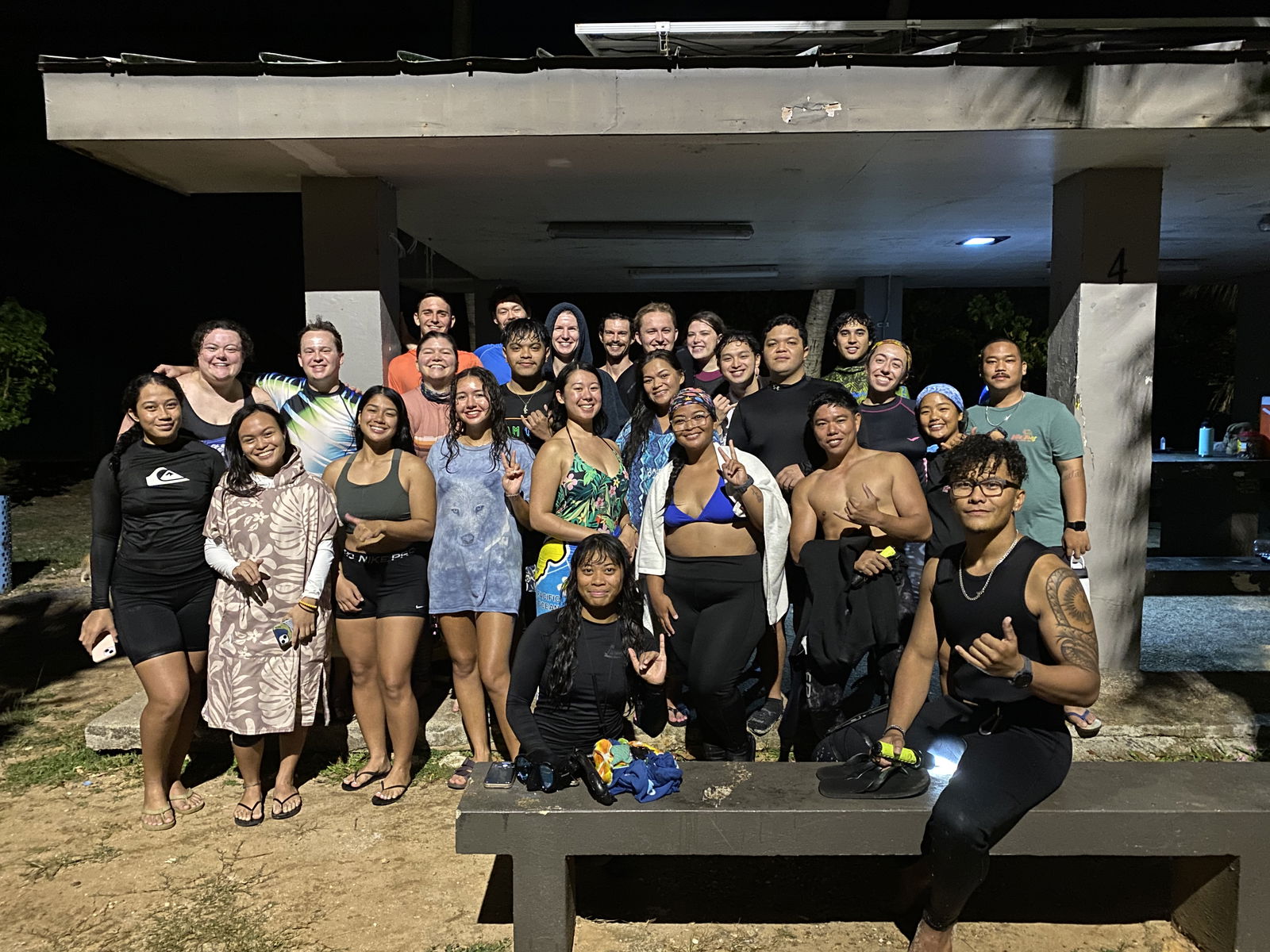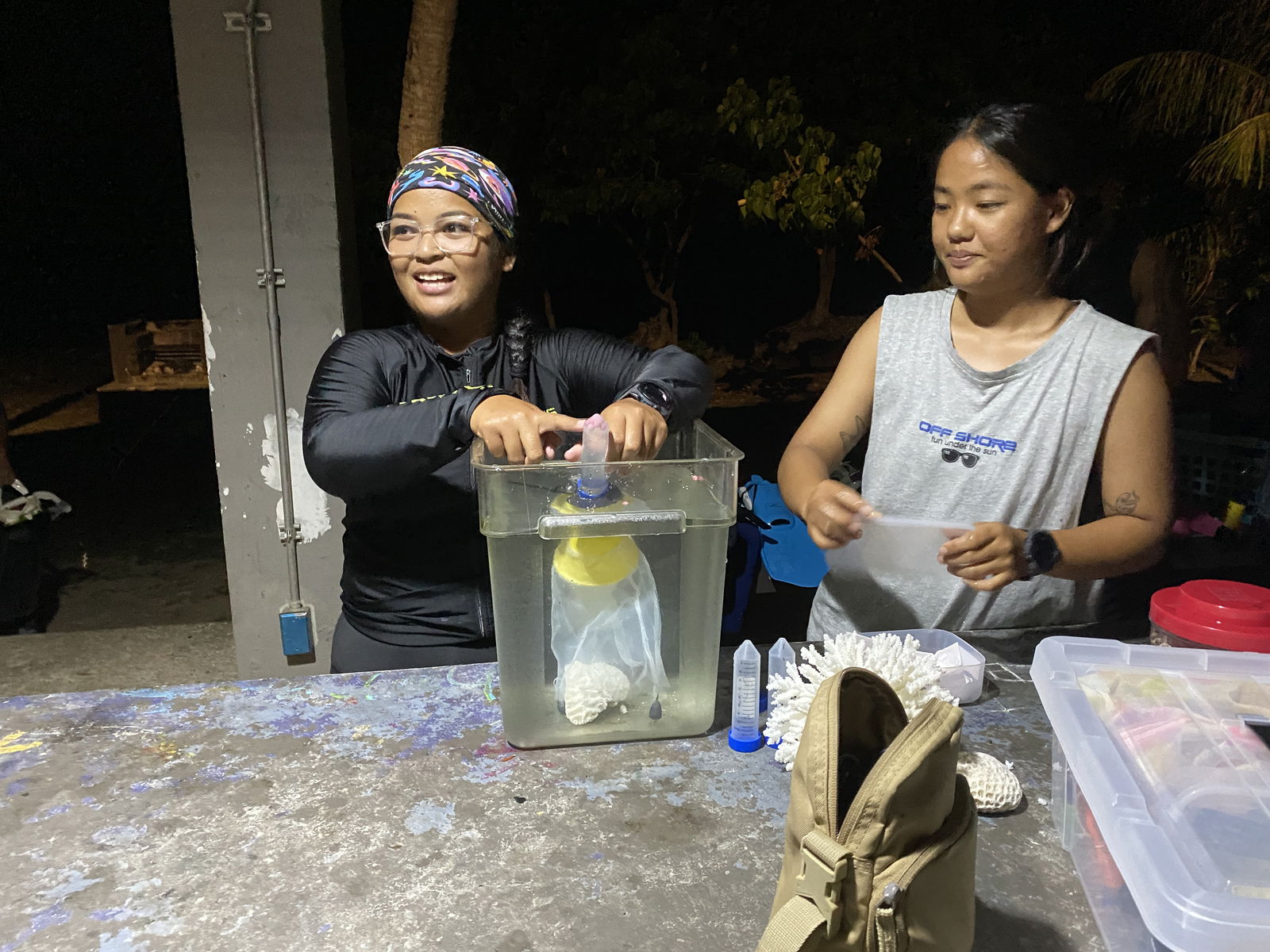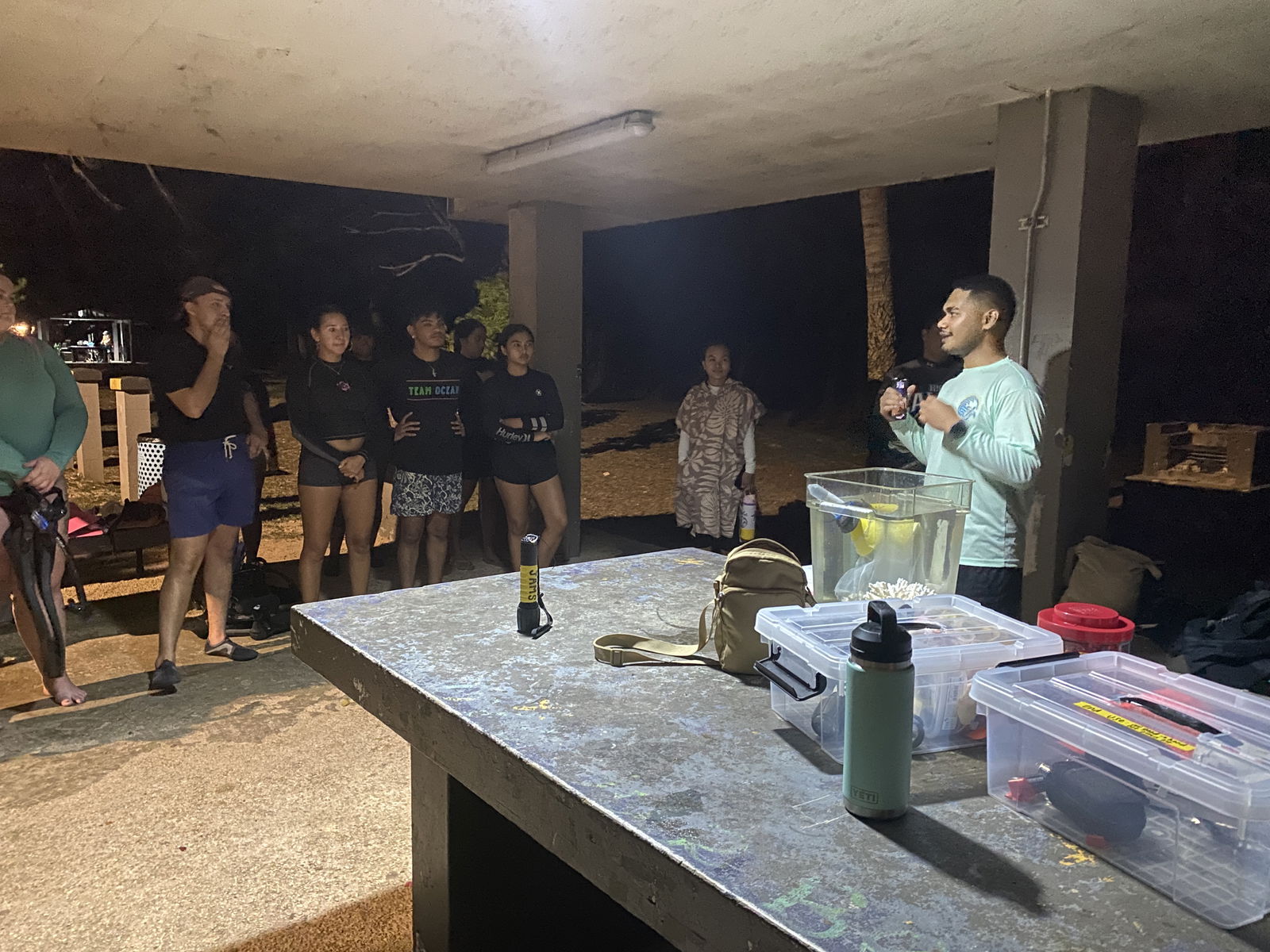STAFF from Johnston Applied Marine Sciences or JAMS and several community volunteers were in the waters off Paupau Beach on Wednesday to collect coral spawn for reef conservation efforts.
Dr. Lyza Johnston, JAMS coral reef ecologist, told Variety that they were collecting spawn from Acropora muricata and Acropora pulchra, which are commonly called staghorn coral.
The coral colonies from which they were collecting were grouped into four different sites, each a few hundred meters from the shore.
The goal is to collect coral gametes so JAMS can fertilize them on land and make new individual corals.
Johnston said this will increase genetic diversity in CNMI reefs, adding that that they can use the new corals to repair areas of the lagoon where corals are not healthy.
JAMS will care for the fertilized coral cells in a lab until they grow large enough to be moved to their coral nursery in the lagoon. Once the corals are ready, they will be transplanted into the wild.
“So these corals aren’t necessarily rare, but they are very vulnerable to climate change and ocean warming,” Johnston said. “Back in 2013 to 2014, over 90% of these corals died in the lagoon. There has been some recovery since then. There are some nice patches now, but they’re not fully recovered yet.”
Johnston said Acropora corals are “broadcast spawners” and “hermaphroditic,” meaning they produce both sperm and egg cells in a gamete bundle.
The corals release them into the water where they float at the surface and eventually break apart. From there, the reproductive cells can combine.
Johnston said coral spawning is influenced by the moon phase, water temperature, and other environmental factors. When a coral colony spawns, it typically does so on a single night during a specific time of year. However, gametes from individual corals usually do not self-fertilize, making it essential for different colonies to mix their gametes.
“Because you have multiple colonies, multiple genetic individuals spawning at the same time, that’s the real importance of this synchronized spawning,” Johnston said. “All the gametes are in the water at the same time at the surface.”
Colonies in one part of the lagoon may release gametes on different days and at different times from those in other areas. That is why JAMS will remain in the lagoon through today.
“It’s important for the genetic diversity,” Johnston said of the work JAMS and volunteers were doing. “When we’re restoring reefs we want them to be more resilient than the reefs that were there in the first place and were vulnerable to climate change and ocean warming. The more genetic diversity you have, the more able a community and population is to adapt to the changing environment. These corals put millions and millions of eggs so we can produce thousands and thousands of baby corals.”

JAMS staff and several community volunteers were at Paupau Beach to collect coral spawn, in hopes that JAMS can create new coral individuals for conservation efforts.

Some of the coral spawn collected on May 14.

Some of the coral spawn collected on May 14.

Joe Nekaifes speaks about corals ahead of the night swim to gather coral spawn.










